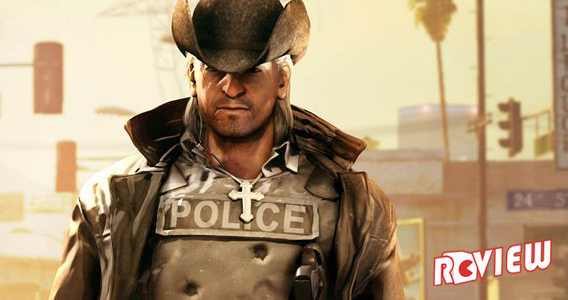
Out today is Ubisoft’s latest entry in the Call of Juarez series, The Cartel. Following an inter-agency task force designed to bring down a rising drug cartel responsible for a recent terrorist attack (that’s right; it’s street crime plus terrorism), the game offers three playable characters; a DEA agent, FBI agent, and LAPD officer—all of whom are preposterously corrupt and ultimately grossly incompetent.
As the story progresses, the three (supposed) law enforcement agents concoct a series of deeply stupid and massively illegal (never mind immoral) strategies for bringing down the Cartel (and achieving a handful of additional goals), most of which fail miserably—which is not surprising, on account of their flawed and nonsensical nature.
Meanwhile, a complex story of cops and gangsters with multiple agendas and conflicting (and frequently changing) agendas is weaved. Now, for clarity: this is not a story that is complex in the engaging, labyrinthine way, but rather the messy and highly confusing way. It’s never entirely clear who’s doing what, and for what reason; the only absolute is that everybody is doing something you don’t know about, and it’s going to bite you in the ass.
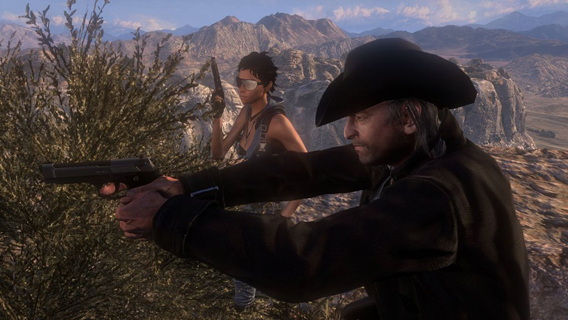
However, the secret agendas do intersect with gameplay in a somewhat novel fashion. In addition to the core mission to bring down the cartel, each of the three selectable characters has a personal story that involves unique agendas—which may even involve collecting evidence to leverage against the other playable characters. Some agendas may run the length of the game, while others may be for a single mission.
There’s a clever idea here, but unfortunately the concept hasn’t been carried across the finish line. Agendas can only be furthered via the collection of secret items, which become highlighted within proximity. However, to complicate matters, being spotted by an ally while thieving evidence is a bad thing—which, in co-operative play, means that one has to watch out for his or her own teammates.
In single-player, however, the AI is simplistic and can be tricked into looking somewhere else just by moving across the room for a moment. The result is that item collection becomes largely mindless and uninteresting when playing alone.
It’s also unfortunate that the resolution of these agendas doesn’t inform the development of the story, but the different views on events offered by each character provide an interesting replay value.
Additionally, picking up items grants the player experience, with the leveling system unlocking a growing catalogue of weapons. There’s a lot to choose from here, and weapons have distinct advantages that work with the particular strengths and advantages of each character, providing ample motivation to grab items and level up.
When unlocked, weapons become available for all characters—but the leveling system isn’t shared, meaning one character may be at level seventeen while another is at level one. This presents a problem for additional play-throughs, because playing as a new character means it’ll be a while before your level is high enough to unlock weapons you didn’t get on your first run.
What’s more, some weapons—like sniper rifles and light machine guns—take a while to unlock, meaning the characters designed to take advantage of those weapons will have nothing to go on for a good chunk of the game.
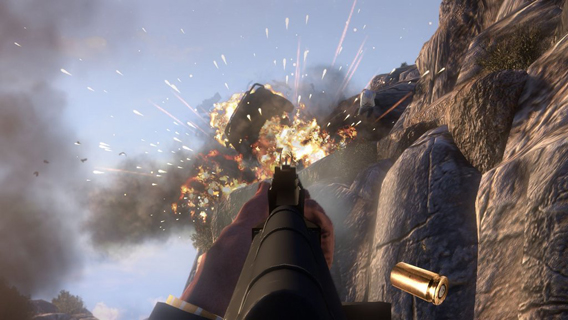
Meanwhile, core combat is a fairly standard affair. There’s a joke in here somewhere about Call of Juarez sounding like a Mexican Call of Duty knock off, and if you boil it down to pure gameplay, that’s not entirely off the mark. The focus is on aiming down the sights to battle massive enemy waves, while a couple of features (like slow-motion breaches) feel lifted directly from that franchise. Still, The Cartel manages to carve out its own atmosphere and feel as a modern take on a western, despite the borrowed mechanics.
Unfortunately, some clumsy design serves to hold back the gunplay. Guns are inaccurate, and a clumsy auto aim moves the reticule around awkwardly without helping much. Meanwhile, hip fire is useless except at close range, while iron sights are so large and clumsy that they make acquiring targets difficult—and create even more confusion by making it nigh-impossible to determine whether or not an enemy has actually been hit.
Furthermore, the AI is of the worst possible variety: stupid, but infinitely accurate. This means that enemies are borderline all-knowing, always aware of player position, and will strafe across open areas, firing directly at the player’s face.
At the same time, their limited, simplistic behaviors force player tactics to become equally limited; if you thought that you might open fire to force the bad guys into cover, you’re probably just going to be gunned down, because the AI will simply stand still and open fire with superior accuracy.
To make matters worse, the jolt caused by taking fire—and the genre’s ubiquitous screen distortion effects when low on health—means that it’s difficult to respond to threats that have already started shooting. There’s a balance in these elements that the best shooters achieve, such that the player might never notice it—but it isn’t present here, and that’s very noticeable.
To throw another wrench into the works, the game insists on forcing the player to battle helicopters repeatedly—which would be fine, if it were interesting or well designed. However, in addition to adding nothing to the cliché of pouring round after round into the enemy vehicle until it explodes (or, alternatively, firing rockets to the same effect), the scenarios are simply designed poorly. They feel like time wasters, existing merely because somebody thought it was appropriate for the genre.
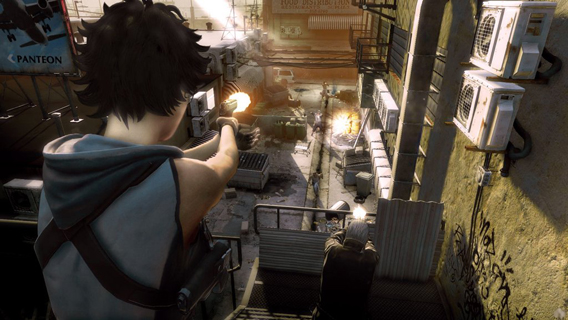
There is one interesting feature though, in that the HUD distinguishes visually between the indicator for a bullet that hits the player, and a bullet that nearly hits the player. This means that the player knows where enemy fire is coming from before being hit—a clever and logical feature that could stand to be included in similar games.
Another plus is the three-player online co-op, but like much of the game, the feature lacks polish and is characterized by significant flaws. Most notably, it’s only possible to start a co-op game in the lobby before each mission; allies cannot drop in and out as the mission goes on, meaning players will spend a lot of time stranded in the lobby waiting. Furthermore, there’s no option to browse existing lobbies or even opt for quickmatch-style matchmaking; the only option is to select a mission, turn on co-op, and hope that someone else is trying to play co-op on that same mission.
The Cartel also presents a multiplayer component, though the offering is somewhat thin. The mode pits players against each other in games of cops versus robbers, in either standard team death match or simple objective-based affairs where the police try to prevent the gangsters from doing what gangsters tend to do. There’s a leveling system with a suite of unlockable weapons and perks, in addition to an interesting partner system where players who stick close to their designated partner will receive buffs.
However, the product lacks the depth and features that have become standard in the multiplayer arena, and the gameplay is characterized by the same clumsiness as the core campaign—while including one additional hiccup in the form of overactive auto aim (which seems like a good thing, until you try to throw a grenade in a particular spot).
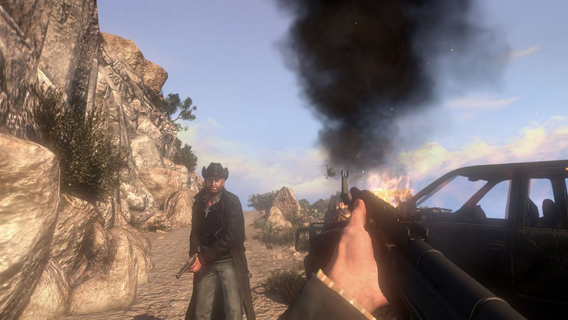
Production values are to standard, more or less. The soundtrack offers some interesting notes, while graphically and artistically the game is adequate—with some caveats. Deserts, cities, and ghost towns look solid and work to sell the game’s “modern western” theme, though character animation is stiff and uninteresting, and the models themselves are unimpressive.
Sound design also has some significant weak spots, with repetitive dialogue and a mess of glitches. Sometimes dialogue that’s obviously meant to be played when the player controls one character is played for another, while other times entire conversations can be repeated if the player visits the location they were originally triggered for. These aren’t so common that they derail the experience, but they remain unfortunate all the same.
Call of Juarez: The Cartel isn’t strictly a bad game; there are some interesting ideas at work, which under the right circumstances could be satisfying and exciting—but in order to achieve such, the player has to suffer through some sloppy design and otherwise run-of-the-mill gameplay. Co-op, multiplayer, and multiple perspectives on campaign events add some value to the product, but over all lack the finish found in similar titles. All things considered, The Cartel probably needed a little more time in the oven.
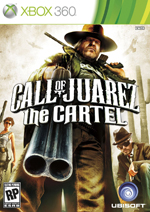
i’ve got it and i’m thinking of giving it back tomorrow. it’s a woeful game and i’d give it a 4 out of 10. not even worth a rental :/
Comment by Anonymous — July 24, 2011 @ 3:59 pm